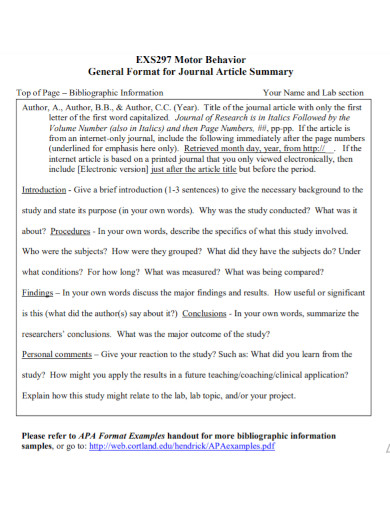
Introduction
Overview of the importance of summarizing journal articles
Summarizing journal articles is crucial for understanding research findings and incorporating them into academic work. It helps in identifying key concepts, methodologies, results, and implications of a study. By summarizing, researchers can grasp the essence of a study without having to read the entire document, enabling efficient knowledge extraction.
Tips for effective summarization
- Be thorough: Ensure to cover all essential aspects of the article, including the study's purpose, methods, results, and conclusions.
- Avoid plagiarism: Summarize using your own words while citing sources appropriately to prevent copyright issues.
- Understand the content: Comprehend how the research was conducted, what variables were measured, and the significance of the findings.
- Use highlighting tools: Mark important sections while reading to easily refer back during summarization.
In summary, effective summarization involves thorough understanding of the research article and clear articulation of its core components.

Before Reading the Journal Article
Understanding the key concepts
Prior to reading a journal article, it is essential to have a clear understanding of the key concepts related to your research. Consider what the authors did, what they studied, and how they conducted their study. This will help you identify the relevance of the article to your own research and guide your interpretation of the findings.
Factors to consider before diving into the article
In addition to understanding the key concepts, there are a few other factors to keep in mind before delving into the journal article. Firstly, avoid solely relying on the abstract, as it may not provide sufficient information for a comprehensive summary. Secondly, be cautious of potential plagiarism by summarizing in your own words and citing sources correctly. Lastly, print out the article and use highlighting tools to facilitate skimming and identification of important points.
Overall, these preparations will ensure a more effective reading and summarizing process for journal articles.

Reading the Journal Article
Importance of reading beyond the abstract
Prior to delving into a journal article, it is crucial to explore beyond the abstract to gain a comprehensive understanding of the study. Relying solely on the abstract can limit your insight into crucial details such as methodology, results, and implications. By reading the entire article, you ensure that you capture all essential information for an accurate summary.
Key elements to focus on while reading
While reading a journal article, pay close attention to key elements such as the research conducted, participants' actions, measurements of variables, findings, and support for hypotheses. Understanding these components will enable you to grasp the study's significance and inform your analysis accurately.

Summarizing the Journal Article
Structuring your summary effectively
When summarizing a journal article, it is essential to structure your summary in a coherent and organized manner. Begin by outlining the key points of the study, including the research focus, methodology, results, and conclusions. By presenting information in a structured format, you can provide a clear overview of the article's main findings and implications.
Avoiding plagiarism and maintaining originality
One critical aspect to consider when summarizing a journal article is ensuring originality in your analysis. Avoiding plagiarism is paramount in academic writing. When summarizing the article, express ideas in your own words while properly citing any sources used. This approach not only maintains academic integrity but also showcases your understanding of the material and its relevance to your work.

Incorporating the Summary into Your Paper
Integrating the article summary into your paper's introduction
When incorporating the summarized journal article into your paper, it is crucial to seamlessly integrate the key findings and insights. The summary should serve as a foundational element in introducing the topic or supporting your arguments. By weaving relevant information from the article into your introduction, you can establish a strong connection between existing research and your study's focus.
Best practices for seamless incorporation
To effectively incorporate the summary, consider contextualizing the summarized content within your paper's broader scope. Highlight how the insights from the journal article contribute to your research objectives or provide a theoretical framework for your study. By strategically blending the summarized information with your own analysis, you can create a cohesive narrative that enhances the credibility and depth of your paper.
Comments
Post a Comment